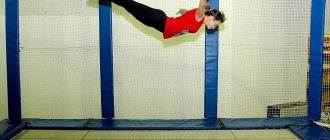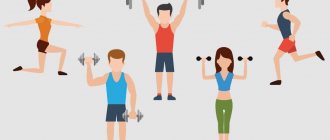The benefits of dancing for losing weight and improving health
Like most forms of aerobic or cardio exercise, dancing has many health benefits, including weight loss.
Apart from burning a lot of calories, dancing can also increase your muscle strength. Building lean muscle mass can help you burn fat and tone your muscles.
Some of the health benefits of regular cardio exercise such as dancing include:
- increased endurance
- improved mobility and flexibility
- better sense of balance
- improved blood flow
- stronger immune system
- better quality sleep
- stress reduction
- reducing the risk of developing certain chronic conditions such as diabetes and heart disease
Dancing is also good for mental health. Aerobic exercise can help improve your mood and reduce your risk of depression.
Dancing has additional benefits because it is often performed in a social setting. Dancing with a partner or in a group can create a sense of community and help you feel more connected to other people.
And just as importantly, it's a fun activity. When you enjoy doing something, you are more likely to continue doing it. That's why dancing can be a great way to stay motivated when it comes to exercise for weight loss.
We dance according to the rules
loading…
To lose extra pounds, tighten your figure, get a flat tummy and amazing cellulite-free skin, you need to dance at least 2 days a week. You need to dance for weight loss for 1-1.5 hours, including a warm-up at the beginning of the workout and mandatory stretching at the end. Dancing in the morning is most effective. Skip breakfast and cheer yourself up with coffee or green tea, and fats will begin to burn at a crazy speed.
It helps to strengthen muscles and burn more calories by alternating dancing with strength training - for example, push-ups or an anti-cellulite set of exercises. You should also adjust your diet, give up high-calorie fats that tend to accumulate on your waist. 2 hours before class, eat protein foods: cottage cheese, chicken or turkey fillet, for example. Drink more water during your workout. But you shouldn’t eat for another 2 hours after dancing.
You can train at home using video lessons. Finding them is not difficult; many choreographers and fitness trainers record them. However, for those who are trying themselves on the dance floor for the first time, it is better to work out with an instructor for the first few months. And only after mastering the basic skills, continue training on your own. Most fitness centers also offer dance programs for weight loss and cellulite reduction.
Whatever dance you choose, dance with pleasure and the calories will never be able to resist your energy! Be slim and active!
loading…
Source
How many calories can you burn dancing?
As with most forms of exercise, faster, more energetic forms of dancing burn more calories than slower ones. For example, hip-hop burns more calories than ballroom dancing.
Below are some examples of how many calories you are likely to burn in 30 minutes of dancing if you weigh 75 kilograms. If you weigh less, you'll likely burn fewer calories, and if you weigh more, you'll likely burn more.
Calories burned in 30 minutes of various dances:
- Ballet : 179 calories
- Ballroom dancing : 118 calories
- Hip-hop : 207 calories
- Salsa : 143 calories
- Swing : 207 calories
- Country dancing : 172 calories
- Tap dance (step) : 164 calories
The U.S. Department of Health and Human Services recommends that adults get at least 150 minutes of moderate-intensity exercise or 75 minutes of vigorous-intensity exercise each week to improve health, including weight loss.
So, if dancing is your main form of exercise, the amount of time you spend on it depends on how vigorously you dance.
If you want to lose significant weight (5% or more), experts recommend at least 300 minutes of moderate-intensity exercise per week.
Zumba - exciting and effective
- Suitable for:
those who want to dance and lose weight at the same time. - What muscles does it train:
all groups. - How many calories are spent:
7–8 kcal per hour per 1 kg of weight. - The result after six months:
not only a noticeable weight loss and good shape, but also a bunch of like-minded people.
very high.
I started with Zumba, now it is at the peak of popularity. This is an intense fitness routine that includes both cardio and strength training. The main rhythms are Latin American dances: salsa, bachata, samba, there are elements of hip-hop and even ballet.
The class really looks less like a workout and more like a party, where everyone is rocking out to the cheerful rhythms. It's fun, but requires full commitment as the pace of exercise is high throughout almost the entire session. In the end, I broke down - without preparation, I simply did not have enough strength to jump to the end.
My only Zumba party went something like this.
Options for dancing and losing weight
There are many different types of dance, all of which have health benefits and potential weight loss benefits.
Many gyms offer dance classes, and there are plenty of online dance videos that you can try to figure out which form of dance is right for you.
If you prefer something less structured, you can also just turn on your favorite music in the living room and dance for 30 minutes or more. If you move and get your heart rate up, you will benefit and burn calories.
If you are interested in certain types of dances, here are some popular dance options for exercise and weight loss.
Zumba
Zumba is a dance fitness program with Latin American and other international music.
She uses interval training, alternating fast and slow movements. These short bursts of high-intensity exercise will help you burn even more calories than just dancing at a constant speed. And it's a full-body workout, so you can tone and strengthen many of your muscles.
Zumba has many other health benefits, including the following:
- weight loss, average 9.5 calories per minute
- decreased pain sensitivity, according to a 2016 study
- social benefits and sense of community as it is a group workout
Zumba choreography doesn't have to be formal, so you can join in on the go. Many gyms and community centers offer classes suitable for all fitness levels.
Is it possible to lose weight through dancing?
One of the most enjoyable and fun sports is dance. Dancing classes develop attention, strength, endurance, coordination, they also have a very good psychological effect, they charge you with positivity and vigor. If you decide to fight excess weight through sports, but you are bored of sweating in the gym, and you don’t like running, try losing weight through dancing - this way you will not only get rid of extra pounds, but also find new friends, tone your body, You will develop flexibility and stretching, and also acquire a new favorite hobby.
In terms of energy consumption, dancing can be compared to running, playing badminton or basketball, swimming or doing gymnastics. Calorie consumption during dancing can be from 150 to 500 kcal per hour, depending on the speed, complexity and intensity of the movements. This is a great aerobic exercise that will keep you fit and a way to have fun at the same time. In addition, they do not require special equipment (with the exception of some cases, for example, for half-dancing or dancing with canvases), you can easily practice dancing for weight loss at home, on the street, on vacation - anywhere.
To lose weight through dancing, you must do it regularly, at least 2 times a week . As an additional load, strength training and stretching are suitable separately. Your sample training schedule might look like this:
- Monday: dancing;
- Tuesday: strength training;
- Wednesday: rest;
- Thursday: strength training + stretching;
- Friday: dancing;
- Saturday: rest;
- Sunday: running, walking, cycling, swimming or other aerobic exercise + stretching.
The duration of the workouts should be 60-90 minutes, first, be sure to warm up, and at the end of each workout, spend at least 5 minutes stretching.
Hip-hop
Hip-hop dancing is a high-intensity, high-performance form of dance. It includes everything from breakdancing to modern dance moves. Some gyms may offer hip-hop classes, but there are also many online videos that can help you learn hip-hop choreography.
Benefits of hip-hop dancing:
- burning calories
- muscle strength, especially leg and core strength
- increased agility and coordination
Many hip-hop dances involve repetitive movements. These moves can lead to injury if done incorrectly or if you don't give yourself time to rest between dance sessions.
Human body types
On average, an average man needs to consume about 2.5 thousand calories per day, and women 2 thousand. However, this is only an approximate indicator in order to accurately determine the required amount of kcal. you need to calculate them using the formula weight + 6.25 x height – 4.92 x age – 161.
To successfully gain the necessary relief, drying and losing excess weight, you need to burn 20% more calories than the amount taken.
The type of structure of each individual person is also essential; there are 3 of them:
- Ectomorph – this body type is characterized by thinness, long limbs and a minimal percentage of subcutaneous fat. This type burns fat faster compared to other types.
- Endomorph - differs from other species in the increased fat layer. Calories are burned the slowest. By nature they usually have a round face and are overweight.
- Mesomorph is one of the most common body types. Located in the golden mean between thinness and excess fat. Optimal for burning calories, exercises best highlight muscle relief. Almost all fat burning tables are written using this body type as an example.
Ballet
Ballet is a form of classical dance that emphasizes precise movement and technique. Although the slow movements of ballet may not burn as many calories as other types of dance, they can still help improve your health and fitness through:
- increased muscle strength and tone, especially in the legs and core
- increasing flexibility, dexterity and coordination
- improving your posture
Many dance studios offer ballet classes for all levels.
If you are interested in ballet moves, you can also try barre classes. These classes, which are offered at many specialty studios or gyms, incorporate ballet, yoga and Pilates into a workout based on small isometric movements.
Pole dancing
Pole dancing, also called pole fitness, can be a great form of exercise. They include movements such as holding yourself on a pole, spinning, and creating shapes with your body.
Besides cardio exercises, pole dancing has the following benefits:
- improved flexibility, especially in the back and legs
- increased muscle strength, especially in the upper body
- burning fat through strength training movements
Warning: Pole dancing requires a lot of force and twisting. You may choose a different form of dance if you have injuries to your hand, wrist, shoulder, knee or back. It is also important to train with an instructor to avoid injury.
Ballroom dancing
Ballroom dancing includes partner dances such as the waltz, foxtrot and tango. Even salsa dancing can be considered a type of ballroom dancing.
Although it hosts ballroom dancing competitions, it is also a great workout for amateurs. Check with your local community center or dance centers near you to see if they have ballroom dancing classes you can take.
Ballroom dancing can provide the following benefits:
- increased muscle strength, especially in the core, legs and back
- increased flexibility
- improved balance
- cognitive benefits such as memory training while working on remembering steps
It's a low-impact dance, so it's a great way to get some aerobic exercise if you have joint problems.
Dancing as therapy
In addition, dancing works great as art therapy. Sometimes it is difficult for a person to express his emotions and feelings in words, to say it out loud, to tell someone else. Therefore, the narrative goes through movements and music. At this moment, the dancer relives the situation and lets it go, the clamps leave the body, it becomes easier to breathe.
It teaches you to hear yourself and your body, as well as to feel another person when it comes to pair dancing or contact improvisation. Walk when led, without resistance, even if in life you are used to commanding, feeling direction and working in a team. This is great social training.
The look becomes more confident, posture improves and facial expression changes - all this has a positive effect on self-esteem. You stop feeling invisible, and you worry less and less about the opinions of others. You become free and relaxed. You begin to set the rhythm of your life without outside help.
Subscribe to our YouTube channel and don't miss the most useful video materials from Beauty HUB!
Source
Safety Tips
As with any exercise, precautions must be taken to minimize the risk of injury. You can stay safe while dancing by following these tips:
- Before you start dancing, warm up by doing dynamic stretching.
- Drink water during and after your workout.
- Make sure the correct form is being followed. Poor form increases the risk of injury. If you are studying in a group and need help, please contact your instructor. If you work out on your own, a gym instructor can help you. Dancing in front of a mirror can also help you make sure you're moving correctly.
- Start intermittently.
- If you feel pain at any time, stop. Some forms of dancing may be difficult or difficult, but they should never cause harm.
- Make sure the area around you is clear of clutter to avoid tripping or falling.
- Take rest days.
- Cool down after dancing.
- If you are injured, pregnant, or have a medical condition, talk to your doctor before starting a dance program.
Exercise outside the home
burning calories in the fresh air occurs faster than indoors.
It is easy to believe in favor of cyclic sports with aerobic exercise (deep breathing at an increased heart rate) by looking at their representatives. Swimmers, runners, cyclists, and skiers are slim, fit, and lean.
- 5th place - riding, skating (5.167);
- 4th place - training in the gym (5.2);
- 3rd place - outdoor games like football, basketball, etc. (6.273);
- 2nd place - water sports (6.625);
- 1st place - running (9.00).
A guaranteed way to burn extra calories is running - moving for an hour at a speed of 12 km/h will burn 700 kcal, at a speed of 8 km/h - 560 kcal.
Walking up the stairs is even cooler - in 60 minutes the body will thank you by losing 900 kcal. uses fewer muscles than running,
therefore, calorie consumption rates are reduced by 15-20%.
Winter types of physical activity require energy expenditure not only for movement - the lion's share of calories is spent to warm the body. During an hour of ice skating, a person loses 700 kcal, and skiing - up to 900 kcal, depending on the conditions.
Don't think that warm clothes prevent you from expending extra calories and don't neglect protection from freezing.
The same applies. When in water, the human body experiences stress, accompanied by the release of calories in order to warm the body. Swimming for an hour at a speed of 10 m/min burns 215 kcal, and at a speed of 50 m/min – 720 kcal.
Jumping on a trampoline is considered an excellent method for losing excess weight.
If you spend 15 minutes exercising, the calories burned are comparable to an hour of training on a treadmill.
How many calories do you burn when playing different sports (video review):
For comfortable assimilation of the information presented below is a table of calorie consumption for a person weighing 70 kg.
Table 1. Calorie consumption during activity at home.
Table 2. Calorie expenditure during activities outside the home.
Any type of physical activity will help you lose weight by burning calories. When choosing, you need to rely on the amount of free time and current sports conditions.
0 1 853
There came a time in my life when I desperately needed to lose 5 kilos. Like many with a similar problem, I ended up in a fitness club and tried exercise bikes, ellipses, treadmills and other equipment. But spinning the pedals and pumping up the abs was boring, time crawled by, like in a lesson at school. Dance training seemed like a cool substitute for the gym. And I started studying the schedule of group dance classes.
There came a time in my life when I desperately needed to lose 5 kilos. Like many with a similar problem, I ended up in a fitness club and tried exercise bikes, ellipses, treadmills and other equipment. But spinning the pedals and pumping up the abs was boring, time crawled by, like in a lesson at school.
Dance training seemed like a cool substitute for the gym. And I started studying the schedule of group dance classes.
The unclear names were alarming: Zumba, Dance Mix, Oriental, Jazz Modern, Body Ballet. To make sure I didn’t make a mistake with my choice, I decided to test everything on my own cats. It was funny. I'm sharing.
I wasn’t particularly athletic and didn’t intend to kill myself in class. The training selection criteria were as follows:
- Definitely a weight loss effect.
- Is not boring! On the contrary, it’s incendiary.
- You should have enough strength until the end of the lesson, you need to finish without feeling a sense of hatred towards the coach.
- Simple dance elements so that you can repeat them, if not the first time, then at least the second time.
I attended different classes and in the end I chose dance aerobics-latin, also known as Dance Mix. It burned no less calories than on exercise machines, and dancing was fun and easy. In addition, I learned that Latin and Zumba always have the most energetic trainers. This is another bonus










